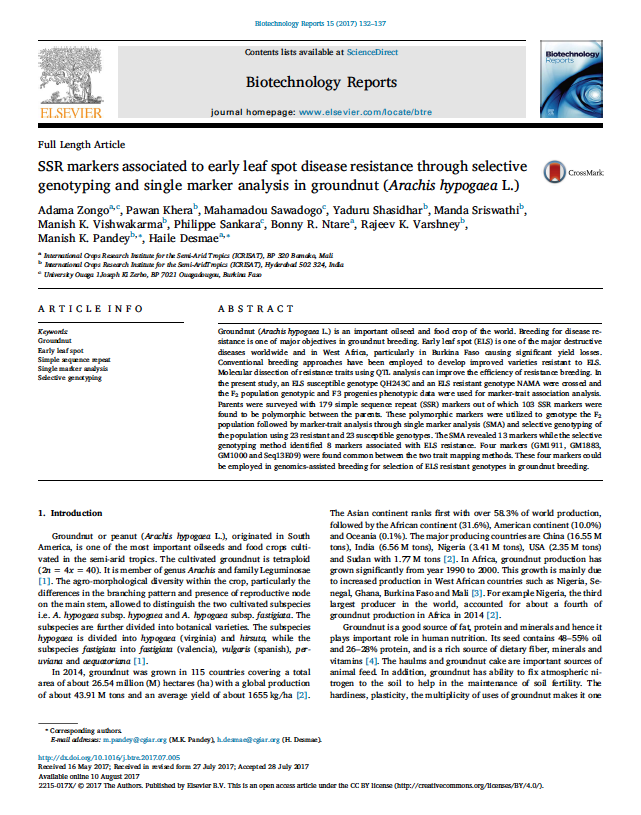SSR markers associated to early leaf spot disease resistance through selective genotyping and single marker analysis in groundnut (Arachis hypogaea L.)
Summary
Groundnut (Arachis hypogaea L.) is an important oilseed and food crop of the world. Breeding for disease resistance is one of major objectives in groundnut breeding. Early leaf spot (ELS) is one of the major destructive diseases worldwide and in West Africa, particularly in Burkina Faso, causing significant yield losses. Conventional breeding approaches have been employed to develop improved varieties resistant to ELS. Molecular dissection of resistance traits using QTL analysis can improve the efficiency of resistance breeding. In the present study, an ELS-susceptible genotype QH243C and an ELS-resistant genotype NAMA were crossed and the F2 population’s genotypic and F3 progenies’ phenotypic data were used for marker-trait association analysis. Parents were surveyed with 179 simple sequence repeat (SSR) markers, out of which 103 SSR markers were found to be polymorphic between the parents. These polymorphic markers were utilized to genotype the F2 population followed by marker-trait analysis through single marker analysis (SMA) and selective genotyping of the population using 23 resistant and 23 susceptible genotypes. The SMA revealed 13 markers while the selective genotyping method identified eight markers associated with ELS resistance. Four markers (GM1911, GM1883, GM1000, and Seq13E09) were found to be common between the two trait mapping methods. These four markers could be employed in genomics-assisted breeding for selection of ELS-resistant genotypes in groundnut breeding.
Open resource Download resource Access resource on external site

